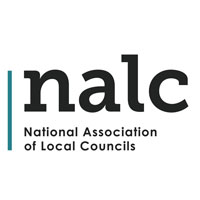There is an expectation that Local Councils should be as transparent and open as possible. With this in mind, the government has introduced two transparency codes to help drive their ambition. The codes apply to larger councils with an annual turnover of above £200,000 and smaller councils with an annual turnover not exceeding £25,000.
Please note, although the transparency codes only require smaller and larger councils to comply, NALC is strongly encouraging all local councils with turnovers of less than £200,000 per year to comply with the transparency code for smaller authorities as a minimum.
Councils with a budgeted income of less than £25,000
The Transparency Code requires that smaller parish councils publish certain information on a website that is publicly accessible and free of charge. Parish meetings are not subject to the code.
The information that should be published is as follows:
Minutes, Agendas & Papers of Formal Meetings
- When: Agendas and associated meeting papers – not later than 3 clear days before the date of the meeting.
- When: Minutes – Draft minutes of the full council, committee and sub-committee meetings not later than one month after the date of the meeting.
Items of Expenditure over £100
All items of expenditure over £100 should be individually listed stating:
- The date the expenditure was incurred
- A brief description of what the expenditure was for
- The amount
- Any VAT that cannot be recovered
Publishing a full list of all expenditures incurred during the year will also meet this requirement.
When: Not later than 1st July immediately following the accounting year to which it relates.
End of Year Accounts
The statement of accounts included in the Annual Return, approved and signed by the responsible Financial Officer and the chairman of the meeting that approved the statement of accounts.
The statement of accounts should be accompanied by:
- A copy of the bank reconciliation for the relevant financial year
- An explanation of any significant variances (in line with proper practices) in the statement of accounts
- An explanation of any differences between ‘balances carried forward’ and ‘total cash and short term investments’
When: Not later than 1st July immediately following the accounting year to which it relates.
Annual Governance Statement
The Governance Statement included in the Annual Return, signed by the Chairman of the meeting that approved the statement and the Clerk. Where the statement contains any negative responses, these should be explained fully including how any weaknesses will be addressed.
When: Not later than 1st July immediately following the accounting year to which it relates.
Internal Auditor’s Report
The annual Internal Audit Report, included in the Annual return form, signed by the person who carried out the internal audit. Where the report contains any negative responses these should be explained fully, including how any weaknesses will be addressed.
When: Not later than 1st July immediately following the accounting year to which it relates.
List of Councillor Responsibilities
This should include
- the names of all councillors,
- Committee membership and functions (if Chairman or Vice-Chairman) of each councillor
- Representation on external local public bodies (if nominated to represent the authority) of each councillor
When: Throughout the year.
Location of Public Land & Building Assets
Publish the following information for each land and building asset:
- Description of what it is including size/acreage
- Location (for example street name, postcode or Ordinance Survey grid reference)
- Owner/custodian (for example if the authority manages the asset on behalf of a charity)
- Date of acquisition (if known)
- Value paid on acquisition (or proxy value)
- Present use
Where this information is included in the authority’s asset register, the register may be published in its entirety or as an edited version displaying only public land and building assets.
When: Not later than 1st July immediately following the accounting year to which it relates.
If your council does not have any assets of this kind include a statement to that effect on the website. Do not just ignore it - the public will then know you have not forgotten to include the information.
Councils with a budgeted income of between £25,000 and £200,000
There is a gap between small Councils with budgets of less than £25K and the larger Councils with budgets of over £200K - currently there is no legislation addressing this section so they do not have to comply with any guidance.
As a matter of good practice, ALCA would recommend that all councils in this middle band adopt the requirements of the smaller councils as a bare minimum and perhaps modify them a little to suit the size of the council e.g. show transactions over £250 rather than £100. Those councils nearer the £200K level should also look at the requirements for the top Councils and see which aspects they could follow. It is better to be already doing many of the requirements when they become law than to suddenly find you have a lot of work to undertake in a short period of time.
Councils with a budgeted income of over £200,000
- Transparency Code requirements for Larger Councils
Towards the end of this document is a table summarising the requirements (before the fraud section). - Frequently Asked Questions




